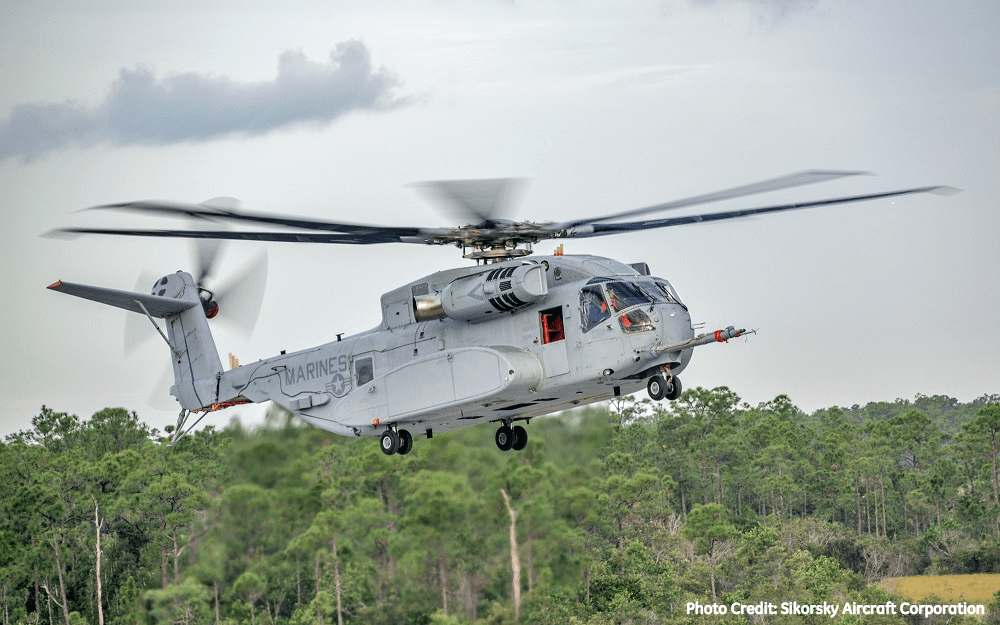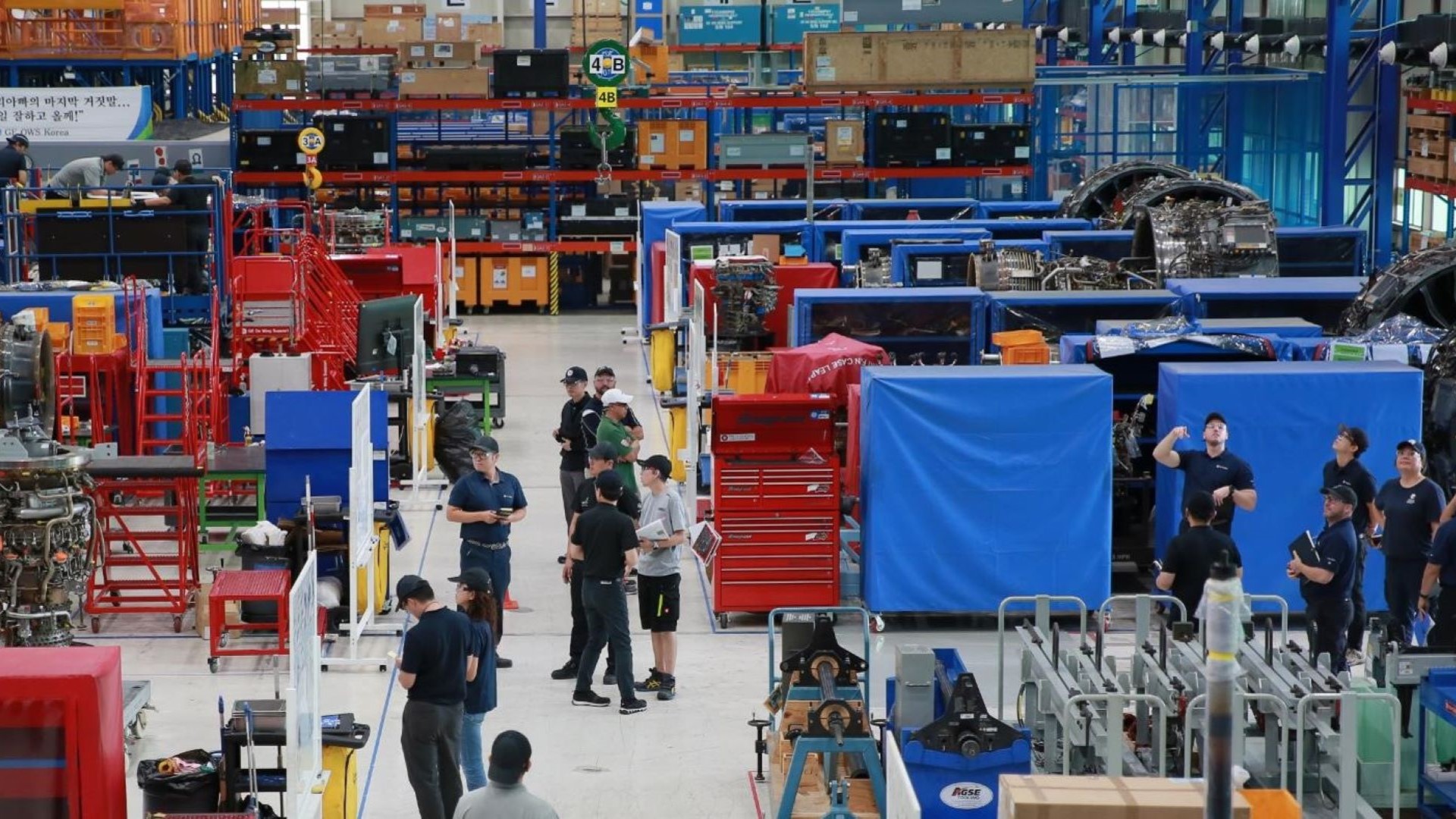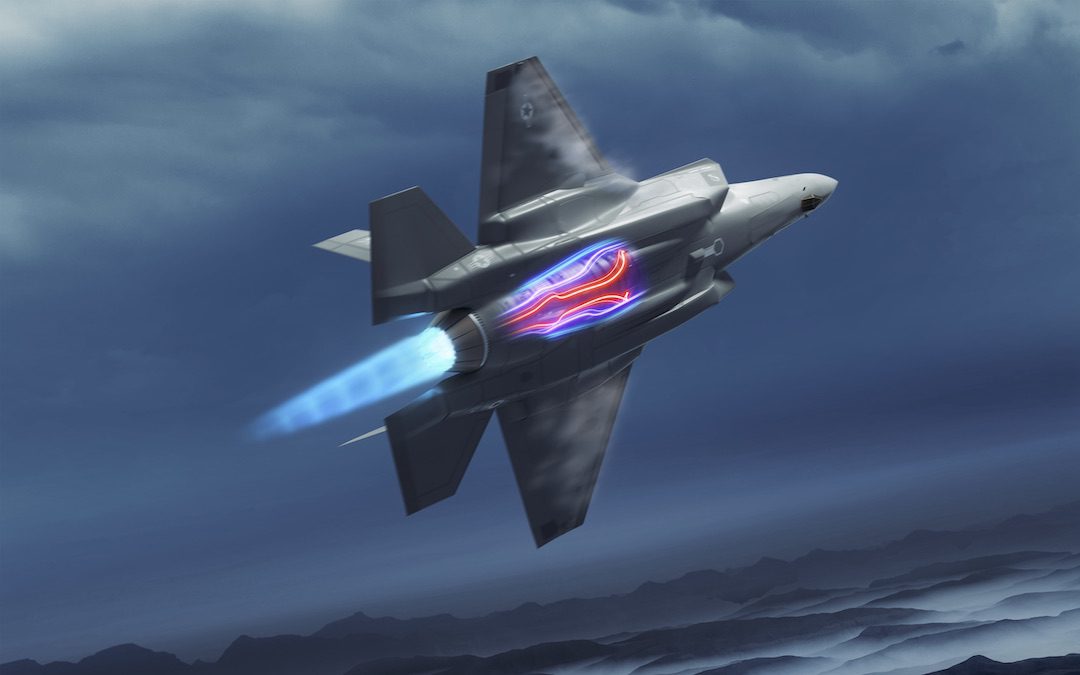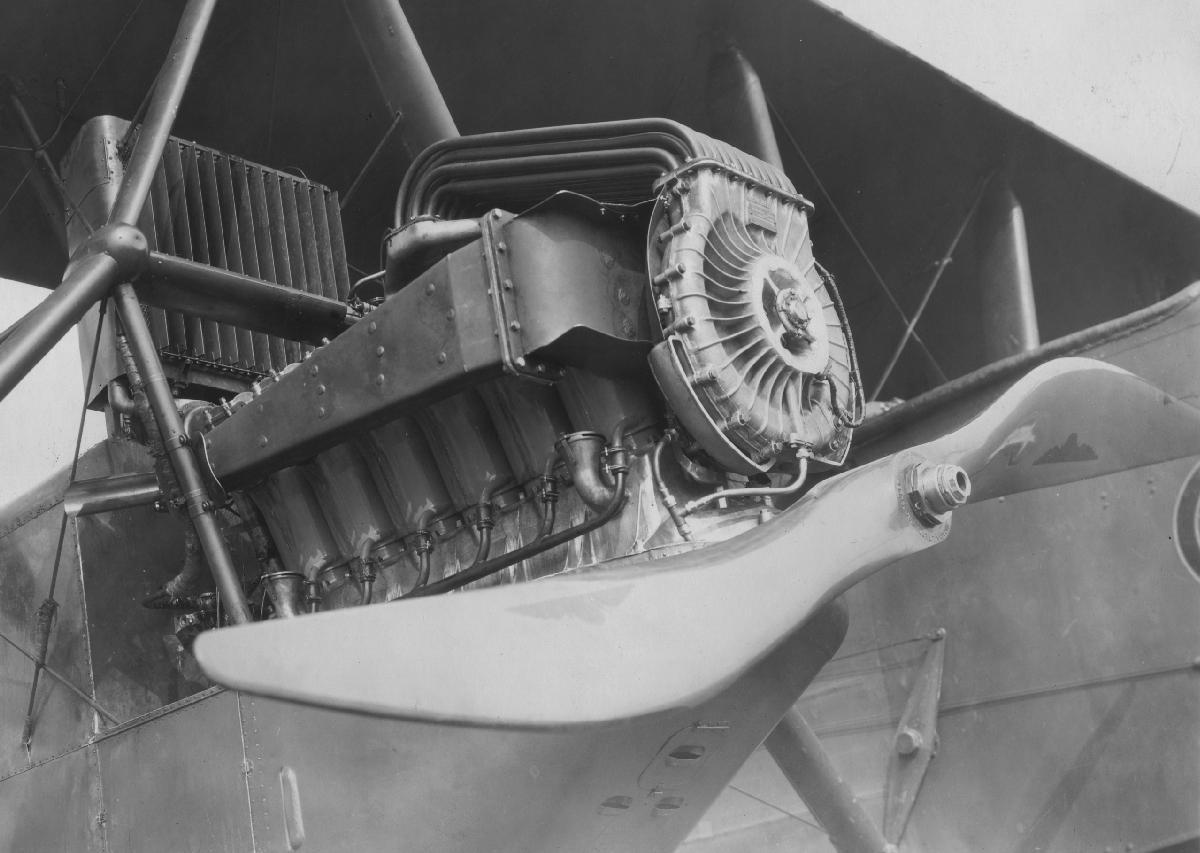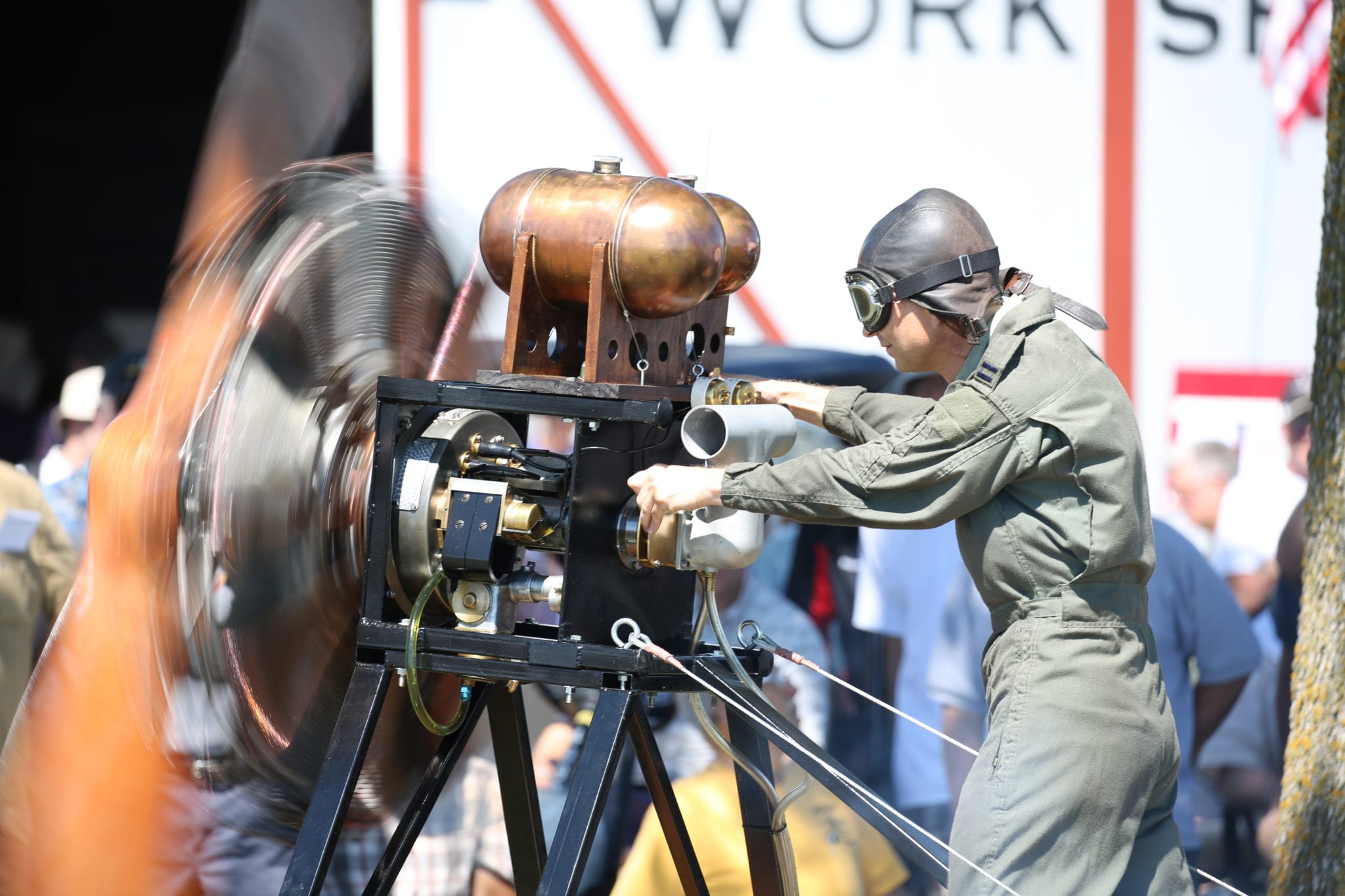GE Aviation’s largest turboshaft engine – the GE38-1B, designated the T408 by the US government – successfully powered the first flight of the U.S. Marine Corps’ CH-53K heavy-lift helicopter, on Tuesday, October 27.
GE is part of an industry team led by Stratford, Conn.-based Sikorsky Aircraft that is assembling prototype CH-53K aircraft. The Marine Corps expect to stand up the first CH-53K heavy-lift helicopter squadron in 2019. The U.S. Navy program of record is for 200 aircraft.
Three 7,332-rated shaft horsepower GE38-1B engines provide the power for the CH-53K King Stallion aircraft, enabling the aircraft to carry a 27,000-pound external load over a mission radius of 110 nautical miles in hot weather conditions, which triples the external load carrying capacity of the service’s current T64-powered CH-53E SUPER STALLION™ aircraft.
Through its rigorous qualification program, the GE38 has logged more than 4,500 hours of testing, demonstrating margin to its performance requirements and superior performance retention characteristics.
In August 2014, the Navy awarded GE Aviation a System Demonstration Test Article (SDTA) contract to manufacture and support 16 GE38-1B engines for the Operational Evaluation phase of the Sikorsky CH-53K King Stallion aircraft development program. In January 2015, the Navy exercised a contract option for six additional engines, bringing the total to 22 GE38 engines. The contract builds on the success of the System Design and Development (SDD) contracts with Sikorsky dating back to 2006, which covered engine factory qualification testing and the delivery of 20 flight test engines to support the Technical Evaluation (Tech-Eval) phase of the CH-53K program.
When compared to its predecessor – the T64 turboshaft engine that powers the SUPER STALLION aircraft – the GE38 will provide more than 57 percent more power, 18 percent better specific fuel consumption and 63 percent fewer parts. The GE38 features a more rugged compressor design to increase durability and resistance to sand erosion and salt water corrosion -- features ideal to withstand the USMC's tough operating environment.
In December 2013, the GE38 completed its 300-hour cyclic durability test, spending the longest time at maximum redline temperatures of any engine in GE history. The GE38 met the USMC’s new engine performance requirements, with ample margin to the customer’s specific fuel consumption target. These results demonstrate the inherent durability and performance retention characteristics that will contribute to a significantly lower life cycle cost for the Marine Corps.
GE Supply Chain facilities in Lynn, Ma; Hooksett, NH; Rutland, Vt.; Madisonville, KY, Dayton, OH, and Jacksonville, FL will all provide parts for this contract. GE is the world-leading provider of jet and turboprop engines, components and integrated systems for military aircraft. Learn more.
GE is part of an industry team led by Stratford, Conn.-based Sikorsky Aircraft that is assembling prototype CH-53K aircraft. The Marine Corps expect to stand up the first CH-53K heavy-lift helicopter squadron in 2019. The U.S. Navy program of record is for 200 aircraft.
“Today’s successful first flight is a critical milestone for the GE38 program as we near engine qualification,” said Paul Acquaviva, GE Aviation’s GE38 program director. “We are honored to work with the Marine Corps and Sikorsky to bring this step-change in propulsion capability to the CH-53 fleet, which we’ve powered for more than 50 years.”
Three 7,332-rated shaft horsepower GE38-1B engines provide the power for the CH-53K King Stallion aircraft, enabling the aircraft to carry a 27,000-pound external load over a mission radius of 110 nautical miles in hot weather conditions, which triples the external load carrying capacity of the service’s current T64-powered CH-53E SUPER STALLION™ aircraft.
Through its rigorous qualification program, the GE38 has logged more than 4,500 hours of testing, demonstrating margin to its performance requirements and superior performance retention characteristics.
In August 2014, the Navy awarded GE Aviation a System Demonstration Test Article (SDTA) contract to manufacture and support 16 GE38-1B engines for the Operational Evaluation phase of the Sikorsky CH-53K King Stallion aircraft development program. In January 2015, the Navy exercised a contract option for six additional engines, bringing the total to 22 GE38 engines. The contract builds on the success of the System Design and Development (SDD) contracts with Sikorsky dating back to 2006, which covered engine factory qualification testing and the delivery of 20 flight test engines to support the Technical Evaluation (Tech-Eval) phase of the CH-53K program.
“The GE38 has been the smoothest product development program in my tenure at GE – the engine has exceeded expectations in terms of performance, schedule and cost,” said Jean Lydon-Rodgers, Vice President and General Manager of GE Aviation’s Military Systems Operation. “Between the GE38, GE3000 and Future Affordable Turbine Engine (FATE) programs, we have a unique multi-generational product plan that shares technologies across our military rotorcraft engines, enabling a low-risk capability to develop high-performance and affordable engines applicable to numerous aircraft.”
When compared to its predecessor – the T64 turboshaft engine that powers the SUPER STALLION aircraft – the GE38 will provide more than 57 percent more power, 18 percent better specific fuel consumption and 63 percent fewer parts. The GE38 features a more rugged compressor design to increase durability and resistance to sand erosion and salt water corrosion -- features ideal to withstand the USMC's tough operating environment.
In December 2013, the GE38 completed its 300-hour cyclic durability test, spending the longest time at maximum redline temperatures of any engine in GE history. The GE38 met the USMC’s new engine performance requirements, with ample margin to the customer’s specific fuel consumption target. These results demonstrate the inherent durability and performance retention characteristics that will contribute to a significantly lower life cycle cost for the Marine Corps.
GE Supply Chain facilities in Lynn, Ma; Hooksett, NH; Rutland, Vt.; Madisonville, KY, Dayton, OH, and Jacksonville, FL will all provide parts for this contract. GE is the world-leading provider of jet and turboprop engines, components and integrated systems for military aircraft. Learn more.
